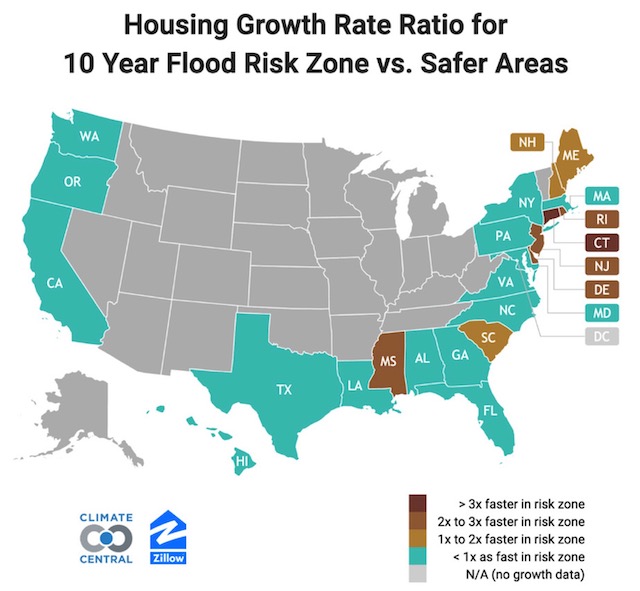A Note To NJ Spotlight On Cheerleading Versus Journalism
Shortly After Pandora’s Box Is Opened, PSE&G Shuts It
More Misleading Spin On “Resilience” and DEP Regulatory Failures
Last week, I noted that NJ Spotlight reporter David Cruz had opened Pandora’s Box with his question to Jersey City Mayor Fulop about a failed “resilience” project, see:
NJ Spotlight then published a followup Ida article. That story did not engage what I wrote, but it did provide mild criticism of Gov. Murphy’s climate record.
But the next day, NJ Spotlight published a story that supported exactly the opposite claims they had reported just the day before!
It praised Gov. Murphy administration’s performance on climate and renewable energy. The story relied on supporting quotes from two of Gov. Murphy’s most consistent political supporters, the same individuals that the Gov.’s press office quotes in Gov. Murphy’s own press releases (and that have politically endorsed the Governor).
These same two individuals are funded by Foundations that also are major donors to NJ Spotlight.
There is no way that these two sources are expert, objective, independent, or credible, while many other sources not quoted by NJ Spotlight are.
Of course, I criticized that. As I noted, NJ Spotlight published a highly misleading story that relied exclusively on known political supporters of the Gov., both of whom are funded by the same Foundations that fund NJ Spotlight (funding that was not disclosed in the body of the story itself, but generic and buried on Spotlight’s webpage).
It is not the first time that this has happened or that I have called it out.
Now today, just days after their own reporter Dave Cruz opened Pandora’s Box and I questioned the wisdom of spending billions of dollars on “resilience” and noted the failure of DEP to update regulatory standards to incorporate climate science, NJ Spotlight went even further and defended PSE&G and – implicitly – denied the DEP failures I noted, see:
Let me be specific about what’s so wrong with this PSE&G story.
The story presents as unquestionable fact two highly misleading arguments:
1) that PSE&G’s $1.47 billion “resilience” program was a huge success; and
2) current regulatory standards are adequate. Let’s take them one at a time.
1. Was PSE&G Resilience Program What Kept the Power On?
NJ Spotlight reporter Jon Hurdle leaves no doubt that PSE&G’s resilience program was a huge success. You don’t even have to read the story to reach that conclusion, the glaring unequivocal headline will suffice.
But the evidence for that conclusion is provided exclusively from statements by PSE&G’s President, Kim Hanemann.
Does anyone else find it highly unusual that PSE&G trotted out the PRESIDENT of the Corporation to basically serve as PSE&G’s press office?
Obviously, PSE&G has a huge interest in putting a positive spin on how they spent $1.47 billion in ratepayer money, especially days after NJ Spotlight reporter Dave Cruz opened Pandora’s Box on that question.
Given: a) PSE&G’s huge interest, b) the fact that PSE&G trotted out the President of the corporation to respond, and c) PSE&G’s funding of NJ Spotlight, one would think that Spotlight would be both skeptical and rigorous in independently and multi-source documenting PSE&G claims (if only to protect their own credibility and reputation, if not out of some ethical commitment to quality journalism).
One would be wrong.
NJ Spotlight relied exclusively on PSE&G’s statements. Those claims were not verified by field data or by independent expert sources, and many competing and conflicting critical facts were ignored.
NJ Spotlight attempts to present a veneer of a factual basis for their story by citing PSE&G’s cherry picked data on electric substations.
Spotlight makes no effort whatsoever to pierce the PSE&G spin and get to the relevant facts.
For example, there are other possible explanations for little loss of power. For example, PSE&G could have redistributed power to offset electric substations that were flooded out.
Instead, Spotlight reported this, unqualified and unchallenged:
Public Service Electric & Gas said it had “almost no” flooding of electric substations during the storm last week, and credited its ‘Energy Strong’ program of raising or rebuilding those facilities since Hurricane Irene in 2011 and Superstorm Sandy in 2012.
Since those major storms, the utility has raised, rebuilt, or eliminated 26 substations, and plans to increase that number to 46 by 2023, along with 14 gas-metering stations and storage facilities, all at a cost of $1.47 billion.
During Irene and Sandy, 29 of the utility’s substations were flooded. Of those, 26 serving about 320,000 customers were modified in the current program, and none of them were flooded during Ida, said Kim Hanemann, the new president of the utility.
What does “almost no flooding” mean? Where specifically were substations flooded? What were the flood elevations at these locations? What were the FEMA flood elevations at these specific locations? Where these flood substations knocked out?
What are the causes of power outages in extreme weather, e.g. wind blowing down power lines versus flooded substations knocked out? Ida was a flood event. Other storms came with wind or snow and ice. PSE&G has data on this. If they spend $1.47 billion on 5% of the power outages, then surely that is relevant.
Substations that were “raised, rebuilt, or eliminated” are group together. How many were raised? How many were just eliminated? That fact makes a HUGE difference and it is not reported. For example, suppose 25 of the 26 substations that were not flooded were simply eliminated? That would completely change the conclusion that the PSE&G resilience program was a huge success or that current regulatory standards are protective.
Irene and Sandy impacted very different locations, compared with Ida. The 29 substations that were flooded by Irene and Sandy were likely located along those coast, which saw far less flooding than Ida’s primarily inland flooding.
It is highly misleading to report this information this way, without specific locations and flood elevations identified.
The NJ Spotlight reporter Dave Cruz, who opened Pandora’s Box – and whose reporting I praised – reached out to me about a followup story.
After reading Mr. Hurdle’s propaganda piece today, I sent him this note:
David – after Jon Hurdle’s piece today, there’s really no reason to talk.
Maybe Hurdle (or you) could ask PSE&G about 1) the actual elevations of the “hardened” substations; 2) what the actual elevations of the floodwaters were at those locations; and 3) whether the substations were knocked out. Or just go out in the field and look at them.
It is possible – if not likely – that many substations flooded and PSE&G avoided power outages by redistributing power. So power outages are not a reliable indicator.
It would also be important to know what the FEMA flood elevations were (they are outdated and based on 100 year flood event) and compare the FEMA elevations to the actual elevations that occurred during Irene, Sandy and Ida. Arbitrarily building 1 foot about FEMA elevations is not a panacea. I guarantee that flood elevations were greater than 1 foot about FEMA in many places.
Hurdle writes stories off of claims in DEP press rerelease and PSE&G spin, never facts. I worked at DEP and I know they spin. I assume PSE&G is as bad or worse. Hurdle should use actual regulatory standards and actual field data (with numbers), but he is clueless and ALWAYS writes the spin as fact without proper interrogation or supporting facts.
This is shoddy, at best, journalism and it really hurts NJ Spotlight’s credibility, especially with such a rosy depiction of the performance of a major donor like PSE&G – without an explicit disclosure that PSE&G is a major donor.
If I were in your shoes – and I’m a former bureaucrat who was at one time loyal to my institution and defended its integrity – I’d talk to Hurdle or editors. I’ve tried.
Given that I’ve raised this with your editors,, I can only assume the worst – that you are writing a big donors press release – surely you understand that PSE&G has very strong interests in defending how they spent over $1 billion of ratepayers money.
Wolfe
2. Why Cite FEMA Flood Elevation Standards and Not DEP NJ Specific Standards?
Are FEMA Flood Elevation Standards Adequate And Do They Reflect Climate Science?
As I wrote, current regulatory standards that drive the engineering designs of resilience projects do NOT reflect climate science and are not protective.
That is a fact. It is a fact for BOTH federal (FEMA and NOAA) and State DEP standards and technical methods.
I focused on NJ DEP stormwater standards, some of which rely on federal standards and methods, including agencies such as FEMA or NOAA standards, including flood elevations and rainfall intensity. Regardless, the federal standards use the same storm and rainfall/runoff methodologies.
I focused on DEP standards, because under NJ State laws, DEP is the lead agency and DEP is authorized to adopt standards that are more stringent than their federal counterparts. Why would DEP rely on lax federal standards? Why is this reliance not a major issue and controversy? The policy goes back to Gov. Whitman’s rollback to minimum federal standards.
I focused on DEP standards because DEP reports to Gov. Murphy and Gov. Murphy is parading around like a leader on these issues and therefore should be held accountable to facts.
Why would NJ Spotlight ignore and obscure DEP’s role and responsibility? (especially after writing so many favorable stories about DEP and GOv. Murphy’s performance).
NJ Spotlight reported this – which ignores DEP standards and mentions only FEMA
Applying Sandy’s lessons
Across the state, the affected substations are chosen because of their presence in flood-zone maps updated by the Federal Emergency Management Agency after Sandy, Hanemann said. Substations that are raised are elevated to 1 foot above FEMA’s flood projection for that location.
It is accurate to say that FEMA adopts flood-zone maps.
It is correct to say that those maps were “updated” after Sandy.
And it is correct to say that PSE&G raised substations 1 foot above FEMA elevations. (BTW, Gov. Christie falsely bragged that he raised DEP CAFRA 1 foot standard after Sandy. But the Corzine DEP raised that 1 foot standard years before Sandy).
But, those FEMA maps, their updates, and the PSE&G 1 foot elevation are not based on climate science and they are not protective.
It is also likely that the actual flood elevations of Ida exposed these standards as inadequate.
It is also likely that the FEMA and Ida flood elevations expose failure in the DEP’s various flood mapping and stormwater management standards and technical methods.
But NJ Spotlight ignores these issues and prints PSE&G propaganda.
The key fact questions to ask are:
a) Are FEMA flood maps – and the rainfall events and runoff volumes that they are based on – based on climate science and do they incorporate the conditions that climate scientists project? (or protective concepts like then 500 year flood).
b) whether and by how much the actual flood elevations of Ida exceeded those FEMA flood elevations.
Prior to Sandy, DEP coastal regulations required one foot of “freeboard” elevation above FEMA elevations.
How did that work out?
Climate science says that the future will not be based on the past.
The federal and DEP standards are based on historical data. They are no longer protective and merely going 1 foot above them is not protective either.
Powerful economic interests are preventing DEP from updating regulatory standards to reflect climate science.
Those kind of updates would place thousands of NJ homes and commercial buildings in flood hazard zones.
They would block billions of dollars in new development.
They would require billions of dollars in flood management and adaptation programs.
They would completely change the cost-benefit regarding the alleged high costs of reducing greenhouse gas emissions.
But you won’t read any of that at NJ Spotlight.


